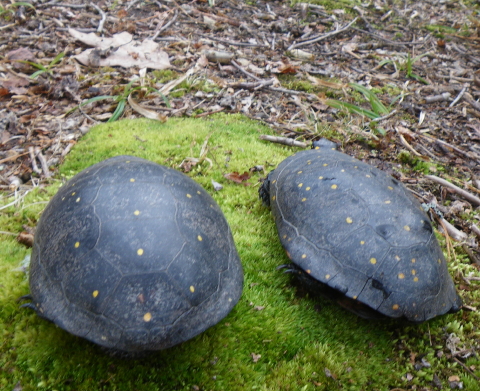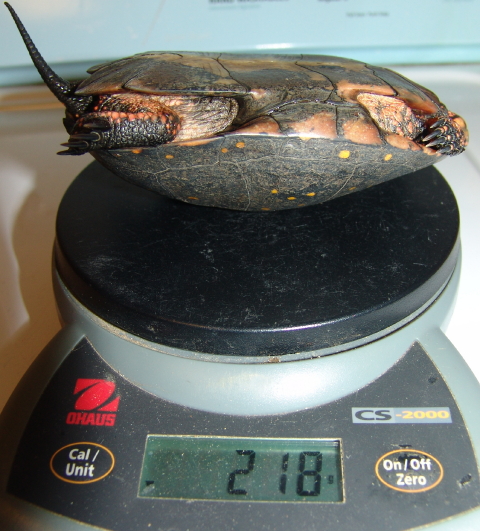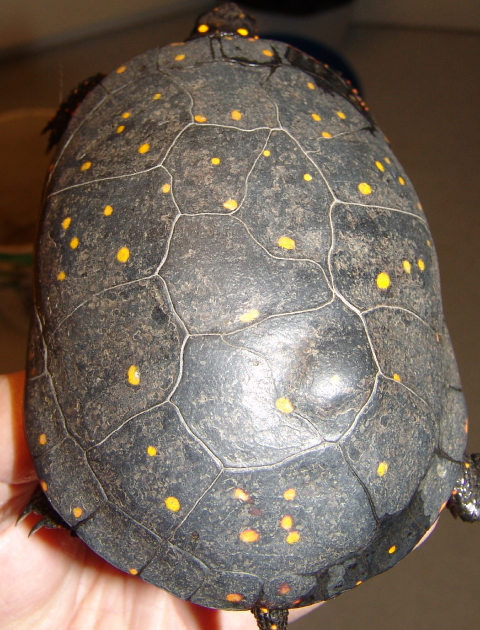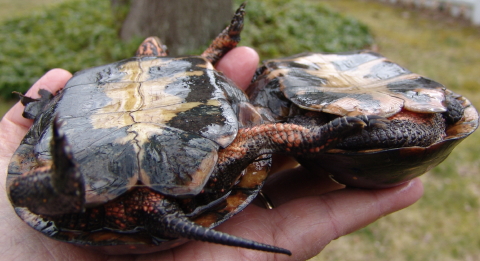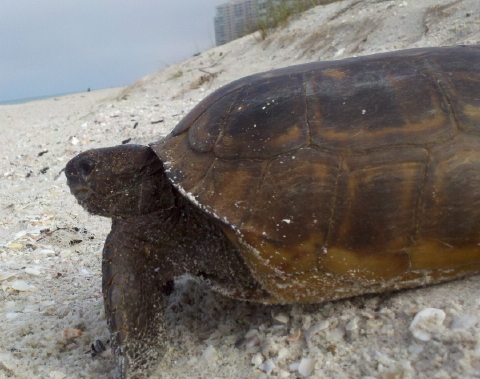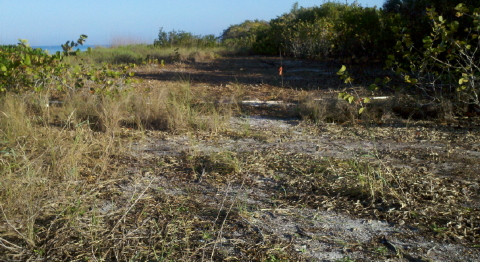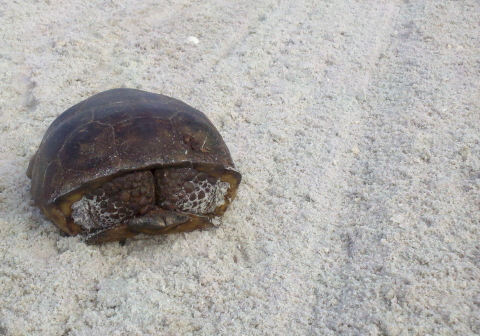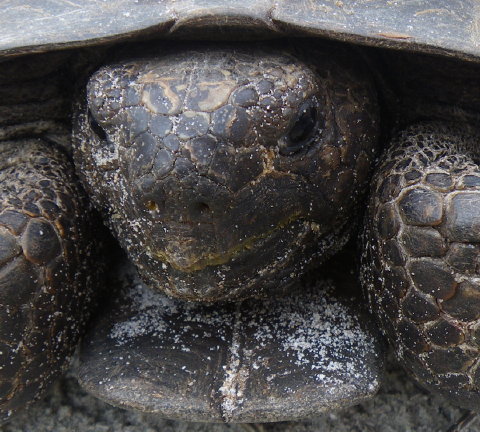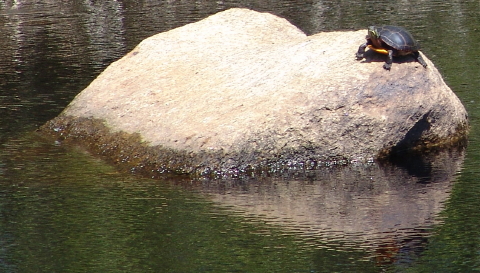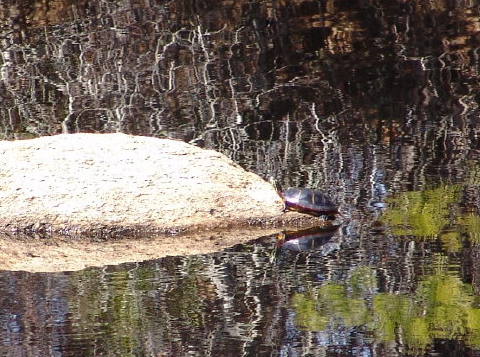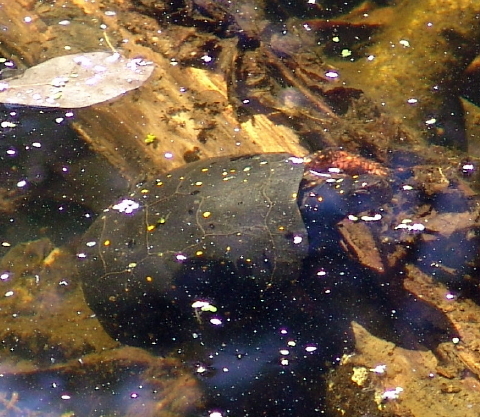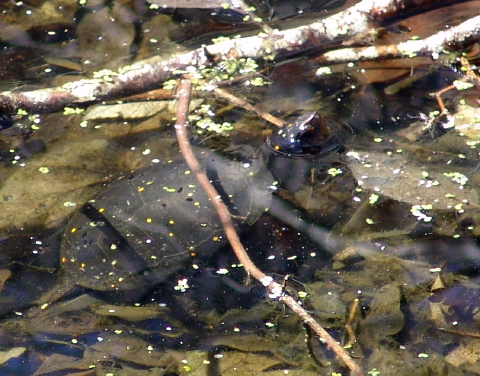The Adorable Couple: Basking Spotted Turtles
Turtle Journal discovered this lovely pair of spotted turtles (Clemmys guttata) on March 14th. The male turtle #2003 on the left and the female turtle #13 on the right were basking in the filtered sunshine on a mossy bank of the small pond at Brainard Marsh in Marion. As early as March 8th, Sue Wieber Nourse had glimpsed this couple lazing along the edge of the pond, yet they were so entangled in muck and debris that they were impossible to capture. Basking on the land today, however, they afforded Sue just the chance she needed to snare them in our long-handle sampling net.
Examining the Female Spotted Turtle
Back at Turtle Journal Central, we closely examined the female turtle that we had first encountered in the pouring rain on March 29th, 2010. (See Spotted Turtles Lovin’ in the Rain.) We wanted to see how she had come through brumation during this record warm winter. We also wanted to re-examine the bump on the right side of her vertebral. As demonstrated in this examination, she exhibits gorgeous coral orange female coloration on her neck and chin.
Female Spotted Turtle Weighs 218 Grams
Female spotted turtle #13 weighed in at 218 grams, surprisingly light compared to her smaller and more compact male companion that tipped the scales at 211 grams. We speculate that her larger, more hollow frame will accommodate the need for egg development, which should begin next month.
Female Spotted Turtle Carapace Anomalies
Spotted turtle #13 has easily recognizable scutal anomalies on her carapace. She sports seven rather than five vertebral scutes and five rather than four right costal scutes. Her prominent bump on the right side of her penultimate vertebral scute showed no change from two years ago.
Female Spotted Turtle – Male Spotted Turtle
Having the adorable couple, female #13 (left) and male #2003 (right), together presented an excellent opportunity to illustrate gender differences among spotted turtles. As you can see from the picture above, female #13 has washboard flat “abs” on her plastron, while male #2003 shows the typical male concavity in the center posterior of his plastron. For those like us who enjoy tracing the history of these charismatic critters, male #2003 was first observed on March 18th, 2011. (See First Spotted Turtle of 2011.) His measurements and weight today were identical to those recorded last year.
Female Spotted Turtle — Male Spotted Turtle
Two other gender differences are illustrated, at least partially, in the image above. Female #13 is on the left. She shows the beautiful, bright female coral orange coloration at the bottom of her chin and on her neck. Although male #2003 was too shy to show his head for the picture on the right, he had a drab male grayish color on his chin and neck. Easier to distinguish above, female #13 has a thin tail with the anal vent inside the length of her carapace. Male #2003 sports a large, thick tail with the anal vent outside the length of his carapace.Â
Female Spotted #13 Leads Male Spotted #2003 Back to Pond
After a short diversion with the Turtle Journal team for a quick checkup and a chance to add to our knowledge of these exquisite, yet elusive critters, the adorable couple were released back at the exact spot along the banks of the Brainard Marsh pond. The temperature had dropped into the very low 40s, enough to make any sane thinking turtle a bit sluggish. As soon as female #13 got her bearings, she stomped off to the pond, struggled out about 20 feet toward the center and submerged into the oozy bottom. Male #2003 stubbornly clung to his perch on the mossy patch until he was sure that his female companion had safely tested the waters. He then slid down the bank with a thud and immediately dove into the shoreline muck and debris. Turtle Journal salutes the adorable couple and thanks them for their mid March visit.
